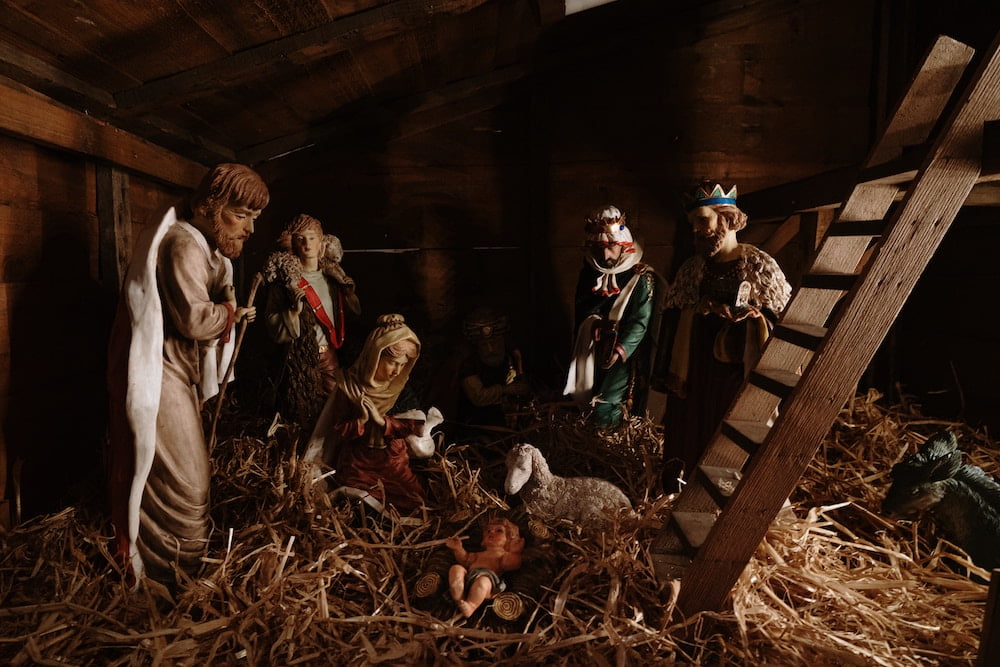CHRISTMAS
Christmas Day (and season) combines two motives: Birth of the Lord, Jesus Christ (Lat. dies nativitatis, natalis) and revelation (epiphany).
The gospels report about the birth of Jesus and offer their theological insights. In Luke’s gospel, Jesus is preceded by John the Baptist (annunciation, birth) and Jesus himself, after being born in Bethlehem and announced to the shepherds in the fields, is circumcised and presented in the temple.
Matthew models the birth story of Jesus according to the story of Moses from the OT. After Jesus is born, the Holy Family finds refuge in Egypt and then returns back to Nazareth. Jesus becomes a new Moses who leads people out of slavery to sin.
John also starts with a Christmas-like text in his Prologue (John 1:1-18) and ponders the incarnation of the divine word, Logos in relation to the coming of Jesus.
Origins of the Christmas feast day are not totally clear (calculation based on the Annunciation celebrated on March 25 or christening of a pagan feast day in Rome?). The feast day gained popularity very quickly in the Western church, perhaps in response to the Arian heresy that denied the humanity of Christ and it spread in the Eastern Church at the end of the 4th cent. as well.
Current Roman liturgy offers the celebration of three holy masses on Christmas Day: at midnight, early in the morning, and during the day. This custom goes back to the 5th cent. Rome, when the Pope started to celebrate midnight mass at Santa Maria Maggiore before his regular 9am mass at St. Peter’s. The procession between these two churches would stop at the Anastasia church and the Pope would celebrate an early mass there, probably as an act of courtesy towards the byzantine administration of the city and his court, since Hl. Anastasia was highly venerated in Byzantium. Medieval mystics linked these three masses with the triple birth of Christ:
- Birth of the Son from the Father before all ages;
- Birth of the Son of God from the Virgin Mary (incarnation);
- Birth of God through the Holy Spirit in the soul of the Christians.
Wonderful Exchange
The incarnation of Christ aims at the salvation of man and of the entire created world from the power of sin and death. God became man, so that people can become children of God. God renounced his greatness and divinity, and instead accepted pain, transition, and death. The purpose of this surrendering is to bring man home and reconcile him. Incarnation is frequently interpreted through the image of light that comes into the world and expels darkness.
Liturgy invites us to ponder this wonderful exchange:
…grant, we pray, that we may share in the divinity of Christ, who humbled himself to share in our humanity…
Holy Masses at Ss. Cyril and Methodius: 4PM (vigil mass); 12AM (midnight mass); 7.30AM; 9.30AM; 11.30AM (Slovak); 5.30PM


